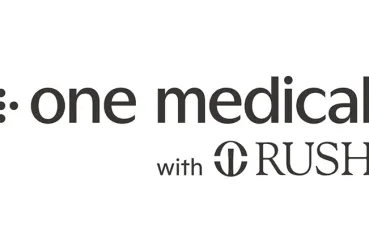We all know what it's like to feel fine one day and then awful the next. Usually this sudden shift in our health is something minor — a cold or a sore throat, for example. But sometimes symptoms that come on fast can signal a serious, even life-threatening problem.
So how can you tell when you're having symptoms that need swift treatment?
One of the most important signs is how quickly symptoms develop or change, says Patricia Schultz, an adult nurse practitioner at Rush University Medical Center's campus Walk-In Care Center.
"My general rule is that if there's ever a question about what you're feeling, call your doctor," Schultz says. If you're noticing new or worsening symptoms, don't wait — get immediate medical help.
Here are some examples of conditions that may — or may not — be an emergency, depending on the speed and severity of their symptoms:
Usually not an emergency
Inguinal hernia. This type of hernia develops when contents of the abdomen — such as fat or part of the small intestine —push through a weak section of the abdominal wall, creating a bulge in the groin. It can cause pain when you cough, lift, bend or strain. Often, a doctor can manually ease the hernia back into place.
Always an emergency
Strangulated hernia. This happens when the blood supply to the herniated part of the small intestine is cut off, or "strangulated." Symptoms include sudden, sharp pain that gets worse instead of going away. A strangulated hernia requires immediate surgery.
Usually not an emergency
Floaters. These small, threadlike shapes in your eyes that seem to move when you look at them are a natural and harmless part of aging.
Always an emergency
Detached retina. A sudden increase in the size and number of floaters may mean a detached retina. You need prompt surgery to avoid losing vision.
Usually not an emergency
Stable angina. Clogged or narrowed arteries in the heart can cause chest pain known as angina. Stable angina is the most common form of angina and occurs when the pain is predictable — brought on by things such as exertion — and goes away with rest or medications.
Always an emergency
Unstable angina. Chest pain that occurs at rest — or that doesn't quickly go away with rest or medications — is considered unstable. If this type of angina is not treated immediately, it may lead to a heart attack.
Usually not an emergency
Heat exhaustion. This occurs when the body gets too hot. It can be triggered by exercise or hot weather. Signs include heavy sweating, dizziness, nausea, headache and pale skin. Heat exhaustion needs to be treated so it doesn't progress to heatstroke. Get out of the heat right away, drink plenty of water, and take a cool shower or bath.
Learn more about the symptoms and causes of heat illnesses.
Always an emergency
Heatstroke. The most serious heat-related illness, heatstroke can damage organs — including the brain — and be deadly if emergency treatment isn't given. Signs of heatstroke include high fever (above 103); rapid, strong pulse; lack of sweating; and flushed skin.
Usually not an emergency
Flu. Symptoms of this viral infection usually come on suddenly and include fever, headache, body aches and fatigue.
Always an emergency
Meningitis. Symptoms of this infection (of which the main types are bacterial or viral) also come on fast and include high fever, severe headache, an altered mental state and a stiff neck.
Viral meningitis usually goes away without treatment. Bacterial meningitis can be fatal if treatment isn't started immediately. Get emergency help if you have symptoms of meningitis. Only a doctor can determine which kind it is.




